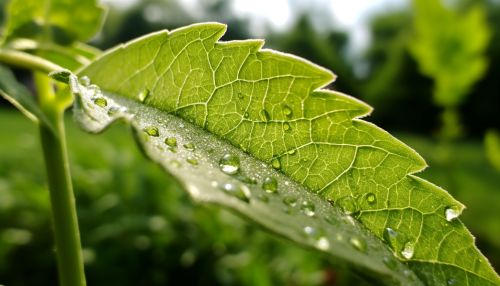The Role of Inducible Plant Defenses in Insect Herbivory
Introduction
In the complex world of plant-insect interactions, inducible plant defenses play a crucial role. These are mechanisms that are activated in response to insect herbivory, providing a dynamic and adaptive line of defense for plants. This article delves into the intricate details of these inducible defenses, their role in insect herbivory, and their implications in the broader context of ecology and agriculture.


Inducible Plant Defenses
Inducible plant defenses are a type of plant physiological response that is triggered by specific stimuli, most commonly herbivory. Unlike constitutive defenses, which are always present, inducible defenses are only activated when a threat is detected. This allows the plant to conserve resources when not under attack, but to respond effectively when herbivory occurs.
Types of Inducible Defenses
There are several types of inducible defenses, each with unique characteristics and modes of action. These include:
- Direct defenses, which directly harm or deter the herbivore. This can include the production of toxic or unpalatable compounds, physical changes such as increased leaf toughness, or the release of volatile compounds that attract natural enemies of the herbivore.
- Indirect defenses, which involve the attraction of third-party organisms that can deter or kill the herbivore. This is often achieved through the release of specific volatile organic compounds (VOCs) that are attractive to the herbivore's predators or parasitoids.
- Tolerance, which involves the plant's ability to recover from or compensate for herbivory damage. This can include rapid regrowth, compensatory photosynthesis, or the reallocation of resources to undamaged parts of the plant.
Role in Insect Herbivory
Inducible plant defenses play a significant role in shaping the interactions between plants and insect herbivores. They can influence the feeding behavior, reproduction, and survival of insects, thereby affecting the dynamics of insect populations and communities.
Influence on Insect Behavior and Physiology
Inducible defenses can have profound effects on the behavior and physiology of insect herbivores. For instance, the production of toxic or unpalatable compounds can deter feeding, while the release of VOCs can disrupt insect communication or attract predators. Some plants can even induce changes in their physical structure, such as increased leaf toughness, which can make feeding more difficult for insects.
Effects on Insect Populations and Communities
By influencing individual insects, inducible plant defenses can also have cascading effects on insect populations and communities. They can affect the population dynamics of herbivores, their natural enemies, and other species in the community. For instance, by deterring herbivory, inducible defenses can reduce the population size of herbivores. Conversely, by attracting natural enemies, they can increase the population size of predators or parasitoids.
Implications for Ecology and Agriculture
The role of inducible plant defenses in insect herbivory has important implications for both ecology and agriculture. In ecological terms, these defenses contribute to the maintenance of biodiversity, the structure of communities, and the dynamics of ecosystems. In agricultural terms, they can be harnessed to improve crop protection and reduce reliance on synthetic pesticides.
Ecological Implications
Inducible plant defenses contribute to the maintenance of biodiversity by influencing the interactions between species. By affecting the behavior, reproduction, and survival of herbivores, these defenses can shape the structure of communities and the dynamics of ecosystems. For instance, they can influence the distribution and abundance of species, the interactions between species, and the flow of energy and nutrients through ecosystems.
Agricultural Implications
In agriculture, understanding and harnessing inducible plant defenses can offer a sustainable and environmentally friendly approach to crop protection. By breeding or genetically engineering crops to have stronger or more effective inducible defenses, it may be possible to reduce the damage caused by insect pests and decrease the reliance on synthetic pesticides. This could lead to more sustainable and resilient agricultural systems.
